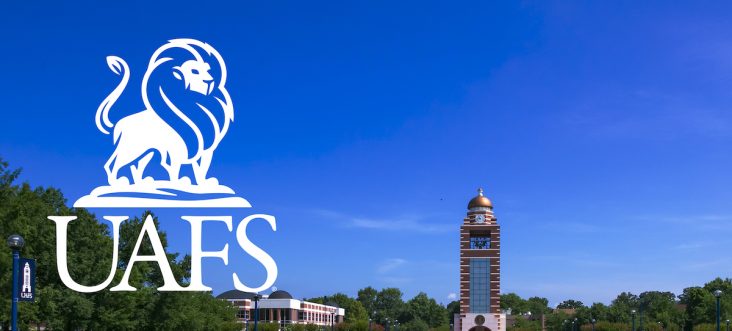UAFS officials discuss efforts to boost student success and retention
by December 8, 2021 5:56 pm 1,143 views

The University of Arkansas at Fort Smith’s new provost of student success and retention outlined the things most likely to affect student retention at the university during the Board of Visitor meet Wednesday (Dec. 8).
Dr. Blake Johnson began his role as the assistant provost of student success and retention Oct. 18 and began taking steps to see more students graduate and become successful in a career and life, said Dr. Georgia Hale, provost and vice chancellor of academic affairs.
According to the National Center for Education Statistics, the average undergraduate graduation rate is 59%, meaning about 59% of all college students complete a bachelor’s degree at the same school where they started college within four years. Nationwide, the average retention rate (students who return for sophomore year) is 78%, according to the College Transitions website.
Retention rates at UAFS dropped this fall. From Fall 2019 to Fall 2020, the retention rate was 72%. From fall 2020 to Fall 2021, that rate fell to 66.8%, Johnson said. The COVID-19 pandemic did impact the fall-to-fall retention for entering full-time students, he said.
“So the rate overall was lower this year, but as I mentioned, we have reason for optimism. There is a new wave of energy to get students involved and better connected to campus resources, and it appears as though 2022 is going to bring back a more immersive student experience,” Johnson said.
Looking ahead to Fall 2022, Johnson said application numbers have risen. Applications for first-time students are up 18% over last year, and admits are up 27%. Johnson told the board there are four barriers students face when it comes to success in college: Cost, academic preparedness, sense of belonging and career applicability.
“These four things are things that nearly all our students will have to address at some point in time,” Johnson said.
Cost can be considered the most common and significant barrier to completion by a student, he said, noting that 51% of students who drop out do so because of cost. Prices for undergraduate tuition, fees and room and board at public institutions rose 31% between 2007-08 and 2017-2018, and between 2009-2019, student loan debt nationally increased nearly 130%, he said.
“Of all students at four-year institutions nationally, 85% say that financial aid is necessary for them to make progress with their degree,” Johnson said.
Academic preparedness refers to whether a student is ready for the process of learning but also empowered with the right resources, materials and intentional support. Johnson said 49% of college students report large gaps in one or more subject areas and 83% report at least some caps in one or more subject areas. Sense of belonging looks at the questions: Is there a place for me here, and do others value my potential?
“Belonging is how we communicate an engaging, welcoming, respectful, inclusive environment,” Johnsons said.
With a sense of belonging comes higher rates of personal and academic success, better persistence in second and third years and lower levels of mental health issues, he said. Career applicability speaks to the long-term value and relevance students perceive from their effort, Johnson said.
“Is the outcome worth the investment?” he said. “Institutions nationally are under increased pressure to demonstrate the value of their degrees.”
Low career applicability can be connected to high transfer out rates. Transfer out rates at UAFS (based on eight-year decision rates for graduation or transfer) are 24%-26% for first-time students and 29%-31% for transfer students, he said.
“The world of retention has undergone a big change in the last 20 years,” Johnson said. “The question should be much bigger than how can students get in? It’s really, are we creating the right environment for students to be ultimately successful?”
Johnson said UAFS has not had a shortage of retention initiatives over the years. Unfortunately, he added, many well-intended initiatives fall short.
“Simply adding a new program, more funding, a new technology, a ‘national best practice’ may not produce the desired results,” he said.
Rather, retention is a “is a big holistic process” in which everyone, from dining staff to the custodial staff in residence halls, to professors, deans and administration has a role, he said.
“We must approach retention with an outcomes first perspective. Equity is really about looking for disparate outcomes within the same effort. We cannot judge success based on our intentions or the frequency of our efforts,” he said.
